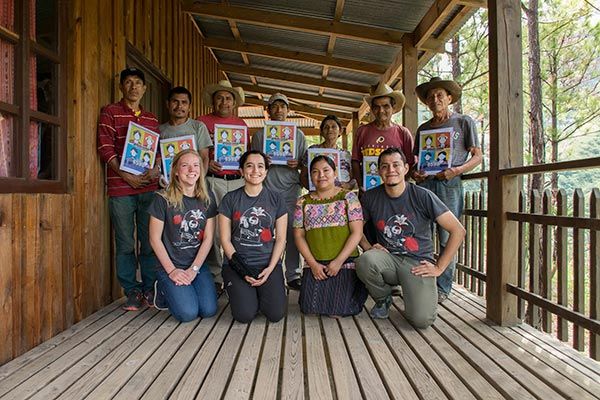
Lucía Samayoa
Lucía Samayoa was born in Guatemala, and, after moving away at age 6, was schooled in various countries throughout Latin America.
But it wasn’t really until last year, when she started working at Guatemalan Forensic Anthropology Foundation (FAFG) in Guatemala City, that the 30-year-old really gained a deeper understanding of the genocide that killed roughly 200,000 civilians – mainly indigenous Mayans – at the hands of the Guatemalan military in the early 1980s.
In her current role as a coordinator of FAFG’s Visual History Archive, she serves as a liaison between USC Shoah Foundation in Los Angeles and FAFG. In this capacity, Samayoa has learned far more about the genocide than just the dates, statistics and political dynamics of that Cold War-era conflict. She has come to know the people whose lives were devastated by the village massacres and mysterious “disappearances” committed under the guise of thwarting a communist threat.
She has been struck by the degree to which many indigenous survivors and their families remain disenfranchised and disconnected from modern society.
“The living conditions of the survivors – most of the time, they still live in poverty,” she said. “When you’re watching the testimony, you sort of see just the one image in the video’s background. But to see the whole surroundings is eye-opening.”
Three years ago, FAFG decided to branch out from its foundational role of gathering forensic evidence of the genocide by adding a new assignment to its organizational mission: capturing survivor testimonies on video.
Not only has Samayoa seen many of the nearly 500 testimonies that FAFG has collected, she has met several of the survivors in person.
The organization has a policy to deliver a DVD copy of the finished product to every survivor prior to publication. Many live in remote villages. Samayoa once joined a team of interviewers on one of these journeys. They traveled by car, by boat and then foot to the Mayan highlands just to deliver a handful of testimonies.

“A lot of our survivors live in rural areas, and don’t have access to computers or the Internet,” she said. “Even if we do return a DVD copy of their testimony, many won't have DVD players or TVs or laptops to play it so it is sometimes something they know is there but can't use it now.”
As FAFG’s partner, USC Shoah Foundation has indexed some of the testimonies and made them available in the Visual History Archive. Additionally, the Institute’s education team – working in concert with FAFG and the International Institute of Learning for Social Reconciliation (IIARS) – has guided the launch of five Spanish-language learning activities in IWitness for middle and high school students about the Guatemalan genocide and its aftermath.
Although Samayoa described her childhood education of the Guatemalan genocide as superficial, her parents were in Guatemala at the time. They were unnerved by the violence that swept through the country during the worst phase of the war, which raged from 1960 to 1996 and turned genocidal between 1981 and 1983.
After moving from Guatemala, Samayoa’s family followed her father’s job as a doctor with the Pan American Health Organization to Ecuador, Honduras and Costa Rica. She earned her undergraduate degree at Loyola University Chicago, where she studied economics and international studies, and attended grad school at Technical University of Darmstadt in Germany and University of Rome Tor Vergata. She earned a master’s degree in international cooperation and development.
Samayoa was hired at FAFG in August 2017 to coordinate the massive administrative workload involved with keeping a database of the survivor testimonies on the collection side, as well as working with USC Shoah Foundation’s education team to ensure that the IWitness activities are easily accessible to teachers in Guatemala.
“I would love to translate some of the lessons already in IWitness that are not necessarily about the Guatemala conflict,” she said. “There are so many good resources in there.”